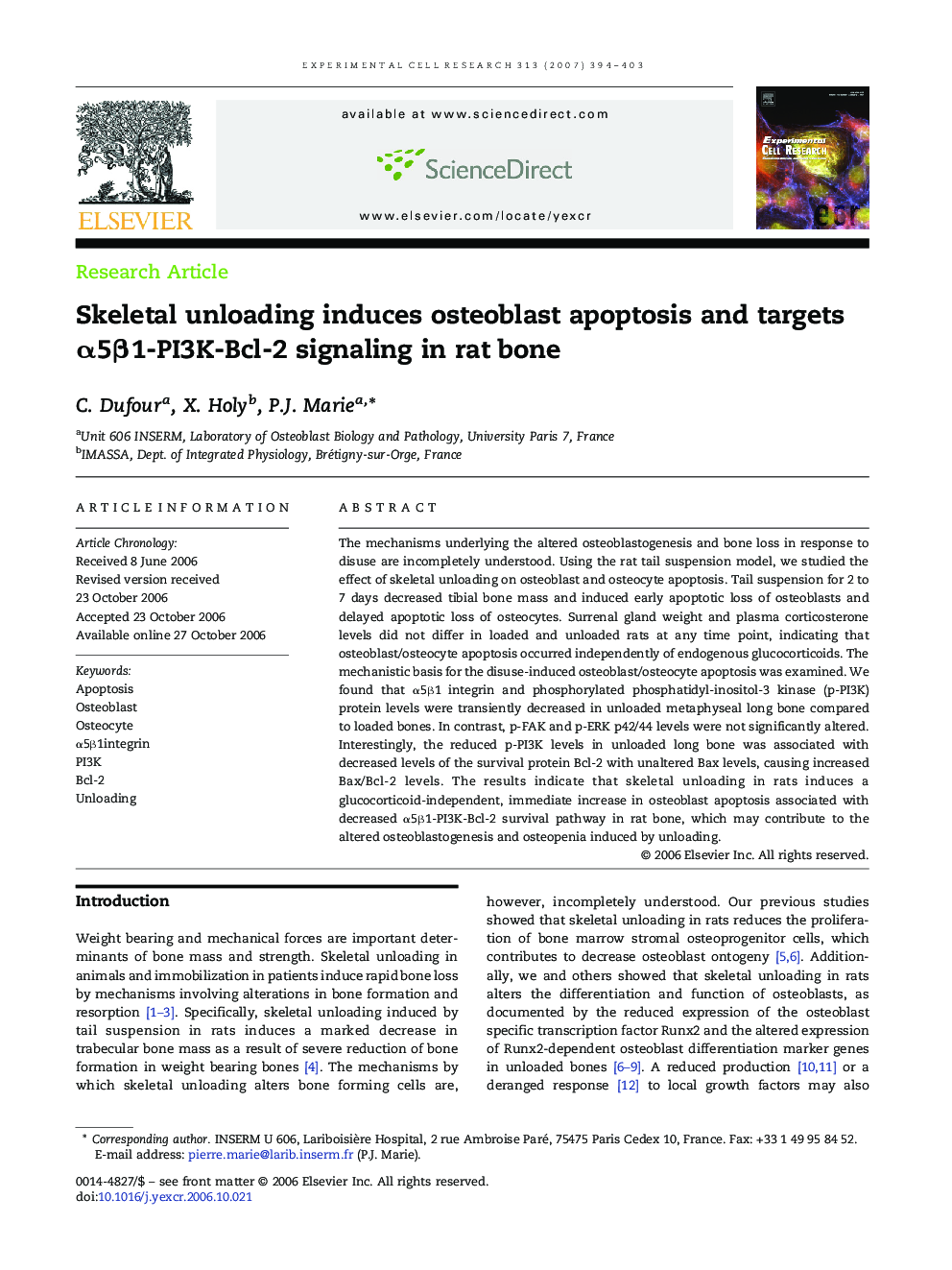| Article ID | Journal | Published Year | Pages | File Type |
|---|---|---|---|---|
| 2132650 | Experimental Cell Research | 2007 | 10 Pages |
The mechanisms underlying the altered osteoblastogenesis and bone loss in response to disuse are incompletely understood. Using the rat tail suspension model, we studied the effect of skeletal unloading on osteoblast and osteocyte apoptosis. Tail suspension for 2 to 7 days decreased tibial bone mass and induced early apoptotic loss of osteoblasts and delayed apoptotic loss of osteocytes. Surrenal gland weight and plasma corticosterone levels did not differ in loaded and unloaded rats at any time point, indicating that osteoblast/osteocyte apoptosis occurred independently of endogenous glucocorticoids. The mechanistic basis for the disuse-induced osteoblast/osteocyte apoptosis was examined. We found that α5β1 integrin and phosphorylated phosphatidyl-inositol-3 kinase (p-PI3K) protein levels were transiently decreased in unloaded metaphyseal long bone compared to loaded bones. In contrast, p-FAK and p-ERK p42/44 levels were not significantly altered. Interestingly, the reduced p-PI3K levels in unloaded long bone was associated with decreased levels of the survival protein Bcl-2 with unaltered Bax levels, causing increased Bax/Bcl-2 levels. The results indicate that skeletal unloading in rats induces a glucocorticoid-independent, immediate increase in osteoblast apoptosis associated with decreased α5β1-PI3K-Bcl-2 survival pathway in rat bone, which may contribute to the altered osteoblastogenesis and osteopenia induced by unloading.
